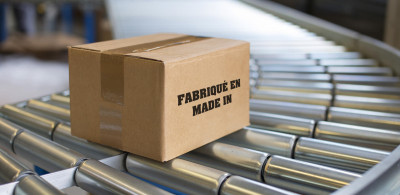One of the necessary elements for successful customs clearance is the proper marking of the products you import. Indeed, if you import certain products that will be sold in stores, you must follow the marking procedures in Canada. For some products that are not intended to be sold directly to the consumer, the rules change. In this article, we will briefly explain what you need to know about marking products imported into Canada.
The marking of products intended to be purchased by a consumer
First of all, it should be noted that the marking of imported products is governed by the Customs Act, more specifically the section dealing with product marking. Thus, all imported products that will end up in a store and are purchased by a consumer must be marked. The idea behind the marking is that the consumer must be able to see where the product is manufactured. In other words, the consumer must be able to see the words “Made In” on the product itself, on the box or even through the box. For example, a cup purchased in a store would require a sticker or a mark that says “Made in” on it.
The technical guidelines for the Marking of Imported Goods are found in Memorandum D11-3-1. Some requirements must be respected depending on the context; for example, everything from one of the NAFTA countries can be marked in French, English or Spanish, whereas all products from other countries must be marked in French or English.
Who is responsible for marking the products?
Normally, the task of marking products is the exporter’s responsibility. It is therefore important to discuss proper marking with foreign suppliers if you intend to import goods into Canada. If Customs examines the products upon arrival and they are not marked or improperly marked, the responsibility rests with the importer and Customs may impose a penalty or return the products or ask the importer to mark the products in Canada under Customs supervision. Consequently, care must be taken not to repeat marking errors, as such products could eventually be returned without the possibility of marking them in Canada.
Under certain conditions, the importer may be authorized to mark the products once they have entered the country. However, the importer must have an agreement in place with Customs beforehand that allows the products to be marked in Canada.
What about imported products that are not intended for sale to consumers?
Certain products do not have to be marked; most industrial products usually require a certificate of origin only. In addition, when another government agency oversees the importation of certain goods, the other agency’s guidelines with respect to the origin of the regulated products may take precedence over the Customs guidelines for marking imported goods. Similarly, pharmaceutical products or institutional products do not always have to be marked with the country of origin. For example, blankets to be used in hospitals do not have to be marked because the blankets won’t be purchased in stores by individual consumers. If we follow the marking logic explained above, the individual person (patient) who will use the blanket does not need to know where it is made because he or she is not purchasing it. The buyer (the institution), who is purchasing the blankets may need to know this information.
On the other hand, certain goods that are not intended to be purchased by a consumer may require country of origin marking. For example, in the case of the additional levies imposed by the United States’ on steel and aluminum products, Canada has harmonized its marking rules with those of the U.S., whereby some steel and aluminum products imported into Canada, for purpose of re-export, must be marked to allow the U.S. to know where such products imported from Canada are manufactured.
In conclusion
In conclusion, it is important for Canadian importers to be well informed on how products imported into Canada should be marked. Thus, everything will depend on the type of products imported. W2C’s customs advisors can help you determine the guidelines that must be followed. Please reach us at consultations@w2c.ca or by phone at 514 368-2637, option 2.

